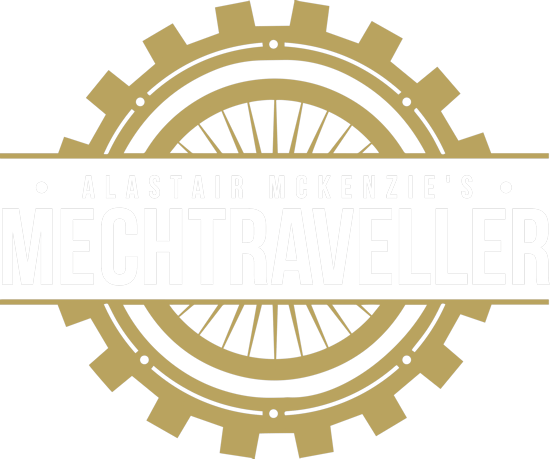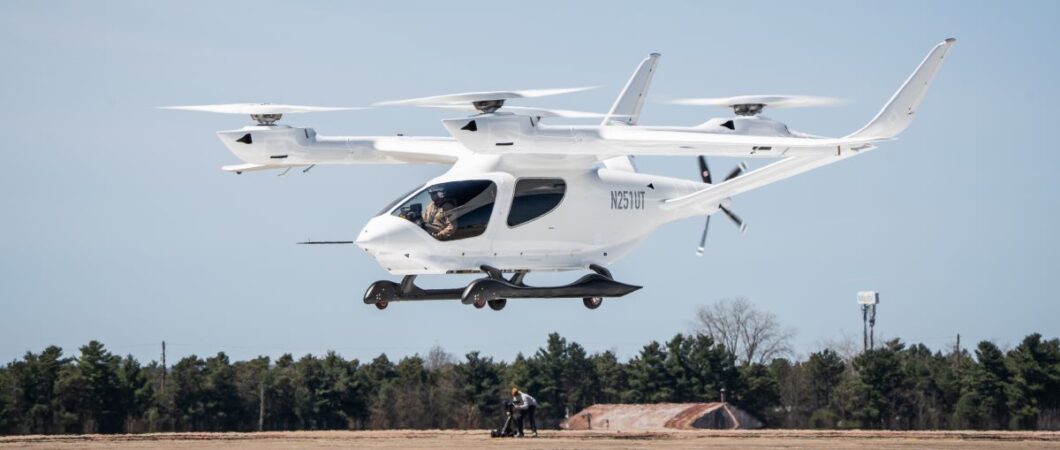
The Advanced Air Mobility (AAM) industry is developing rapidly and we can expect to see electric Vertical Take-Off & Landing aircraft (eVTOLs) in the skies over our heads in the next few months and years.
This is a handy list of some of the main players in the air taxi market.
Since eVTOL development and certification is now running at fever pitch, forgive me if the listings are not always bang up to date!
AIRBUS |
European (France/Germany headquartered) |
| Aircraft: | CityAirbus NextGen |
|---|---|
| Type: | Wingborne/Multi-rotor |
| Status: | Under development. A full-scale prototype was unveiled in March 2024, and the first liftoff (tethered flight) has been performed, marking the start of its flight test campaign. Expected operational: 2025 |
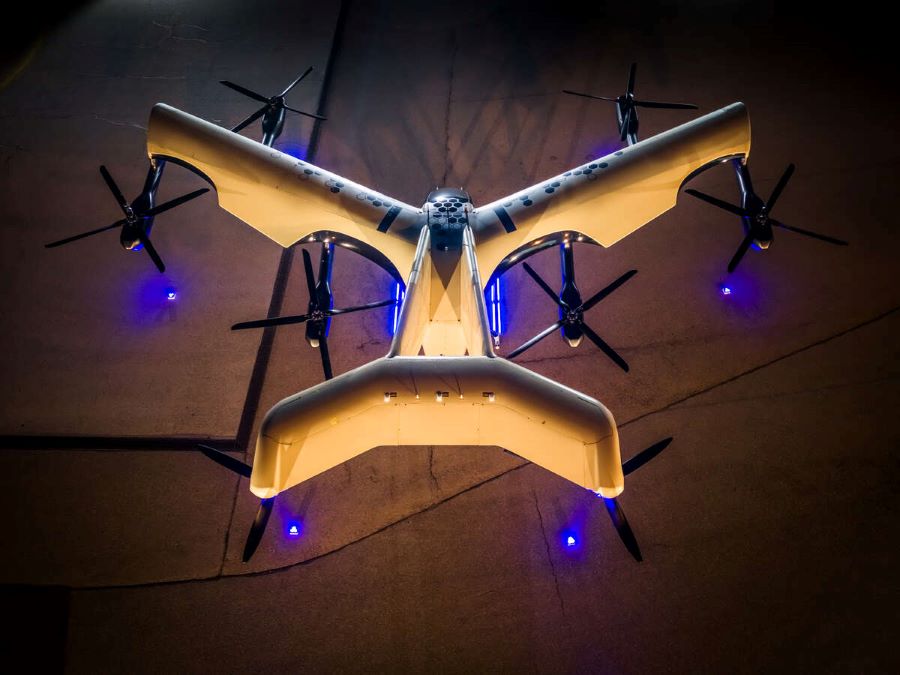 CityAirbus NextGen (© Airbus Helicopters 2024 – Christian KELLER) |
The CityAirbus NextGen is Airbus’s latest eVTOL project, building upon lessons learned from previous demonstrators like the CityAirbus Alpha and Vahana. Designed for 1 pilot + 3 passengers and a range of 80 km (~ 50 miles), it features a fixed wing, a V-tail, and eight electric propellers, which are intended be simple for certification and maintenance, offering reduced operating costs. The aircraft is designed for urban air taxi services, with a focus on low noise levels. Airbus is developing the CityAirbus NextGen to meet EASA’s Special Condition VTOL enhanced category certification standards, aiming to provide a realistic and reliable solution for urban air mobility. |
ALTO VOLO |
United Kingdom |
| Aircraft: | Sigma |
|---|---|
| Type: | Quad ducted-fan jets |
| Status: | Planned to go operational in 2025. |
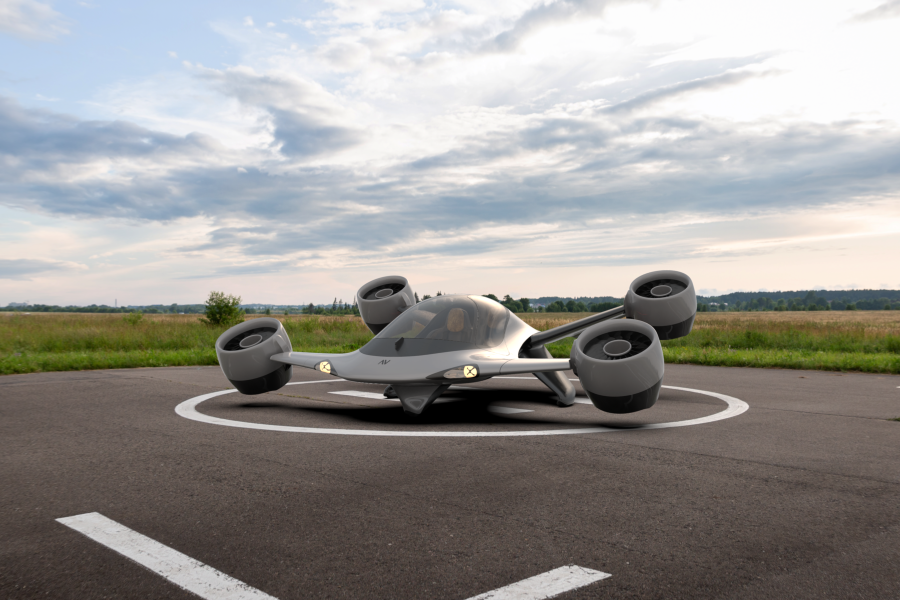 Alto Volo Sigma (Photo: © Alto Volo) |
The 3-seater Sigma eVTOL has a hybrid-electric tilting jet propulsion system that reportedly gives it a 500-mile range and cruise speed of 220mph. Its hybrid power enables it to use the high power output of batteries for take-off and landing while relying on liquid fuel for extended flight range. It’s designed for point-to-point personal urban use, taking off from homes rather than vertiports, and claims to be over 80% quieter than helicopters. It can manage safe & stable flight on just three engines in the event of a single engine failure but also has a ballistic parachute as a back-up. Would-be purchasers can now place a £850 deposit and design the interior of their Sigma using Alto Volo’s online configurator. |
AMSL AERO |
Australia |
| Aircraft: | Vertiia |
|---|---|
| Type: | Box-wing multi-rotor |
| Status: | Tethered flight-testing in 2024. Has applied for AAM-type certification from CASA. Hopes to be operational by 2027. |
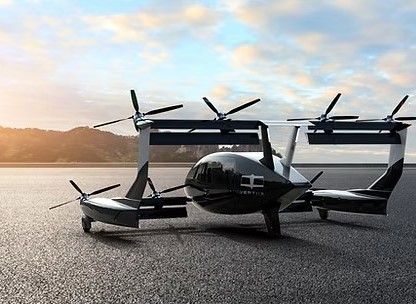 Vertiia (Photo: © AMSL Aero) |
The hydrogen-electric Vertiia has been designed as a multi-role long-range eVTOL aircraft with aeromedical, passenger and cargo layouts. Using liquid hydrogen, Vertiia can refuel in 10 minutes and fly for 1000km Range at 300 km/h with a 500 kg payload. AMSL Aero received its first commercial order from Aviation Logistics, the company behind Australian regional airline AirLink, and hope Vertiia could be flying regional passengers by 2027. |
ARCHER AVIATION |
USA |
| Aircraft: | Midnight |
|---|---|
| Type: | Wingborne/Multi-rotor |
| Status: | Prototype assembled, undergoing ground testing in preparation for flight tests. Expected operational: 2025 |
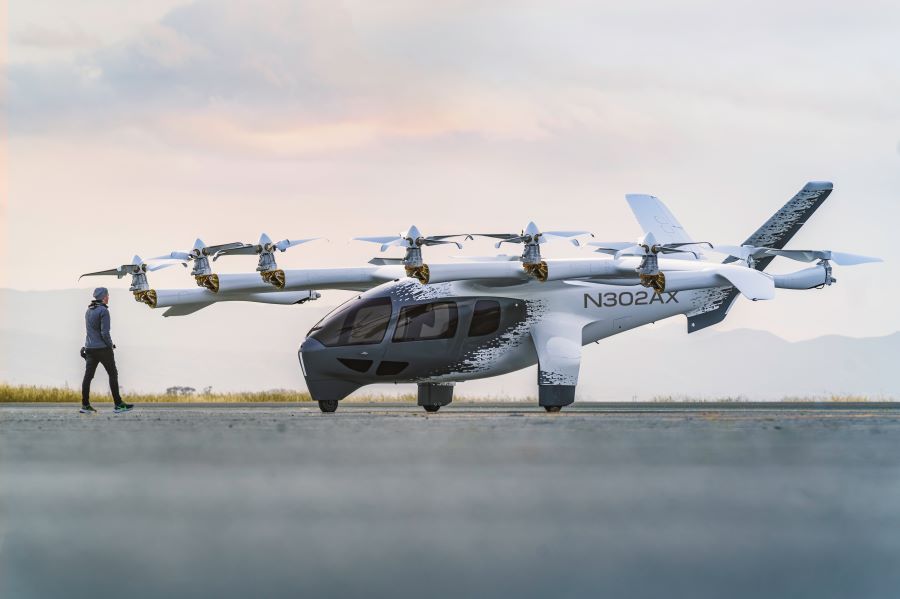 Archer Midnight (Photo: © Archer Aviation) |
The Archer Midnight is a five-seat (1 pilot + 4 passengers) eVTOL aircraft designed for short-distance (60 miles/97 km) urban air mobility. It has “lift-plus-cruise” configuration with twelve tilting rotors for vertical take-off and landing and fixed wings for efficient forward flight. The Midnight is being developed with an emphasis on safety and low noise emissions. Archer has a significant partnership with United Airlines, which has placed a large order for the aircraft, with plans to establish electric aerial ridesharing services in congested city environments like New York City and Los Angeles. Archer have just (22 Sep 2025) test flown their Midnight aircraft to its highest altitude flight to date, reaching altitudes of 7,000 feet. During this flight, Midnight’s test pilot conducted a steady climb after take-off, levelled off at altitude, then continued to fly for 45 miles in total at speeds in excess of 120 mph. The achievement follows August’s record-setting flight in which Midnight covered approximately 55 miles in 31 minutes at speeds exceeding 126 mph. |
AUTOFLIGHT |
China |
| Aircraft: | Prosperity |
|---|---|
| Type: | Wingborne/Multi-rotor |
| Status: | Type certification underway and production factory being built. Expected operational: 2025 |
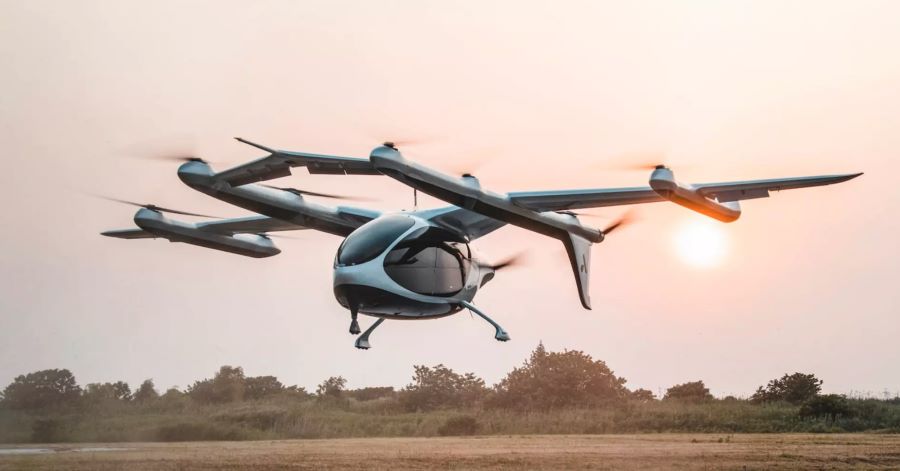 Prosperity (Image: © Autoflight) |
The Prosperity air taxi is designed to carry 4 passengers + pilot at 200 km/h for up to 250 kilometres. It will take-off and land vertically, using its eight lift motors, then it transitions to wingborne flight powered by two pusher props. AutoFlight is one of the earliest avtech companies in China to start making eVTOLs, including large payload logistic and autonomous unmanned aerial vehicles (UAVs). Their logistic UAVs have now accumulated over 10,000 hours of flight time and been tested in all kinds of extreme conditions. Their CarryAll cargo eVTOL received a Type Certificate (TC) from the CAAC in March 2024, making it the world’s first ton-level eVTOL aircraft to obtain TC certification. Meanwhile Prosperity has made demo flights in China and the Middle east. |
BETA Technologies |
USA |
| Aircraft: | Alia 250 |
|---|---|
| Type: | Wingborne/Multi-rotor |
| Status: | In development. Expected operational: 2027-2028 |
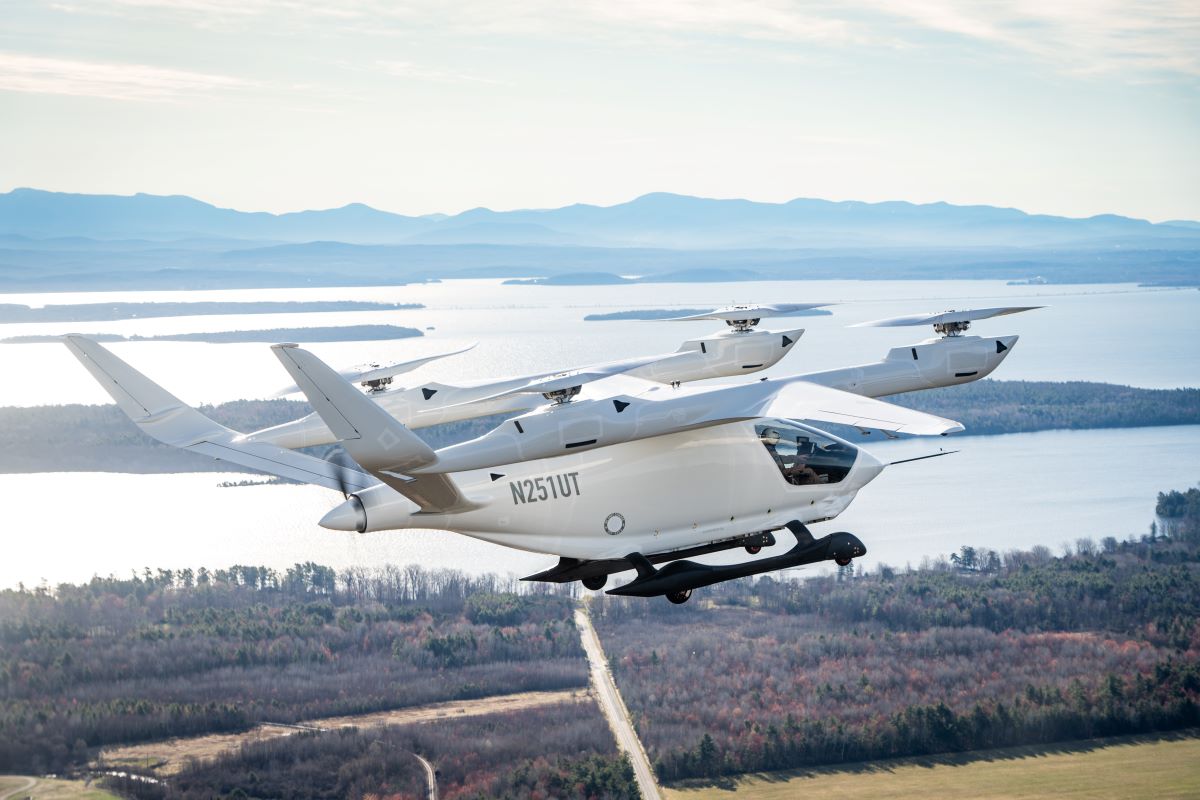 Alia 250 (Image: © BETA Technologies) |
The ALIA-250 is an all-electric, lift-plus-cruise eVTOL aircraft designed for various missions including passenger transport (1 pilot + 5 passengers) OR cargo delivery and medical applications with a range of 290 miles (463 km). Its design features four top-mounted lift motors and one rear pusher motor for efficient vertical and wing-borne flight. BETA are first prioritising the certification of a conventional take-off and landing (CTOL) version, the CX300, which shares many design features. The intention is to accelerate market entry and fund the eVTOL’s development. So the ALIA 250 should get certified 12-18 months after the CX300, which is targeted for 2026. The company is also developing a modular rapid charging station network to support its aircraft. |
EHang |
China |
| Aircraft: | EHang 216S |
|---|---|
| Type: | Multi-rotor |
| Status: | Received Type Certification in 2023 for commercial ops. Is flying limited tourism flights in China. |
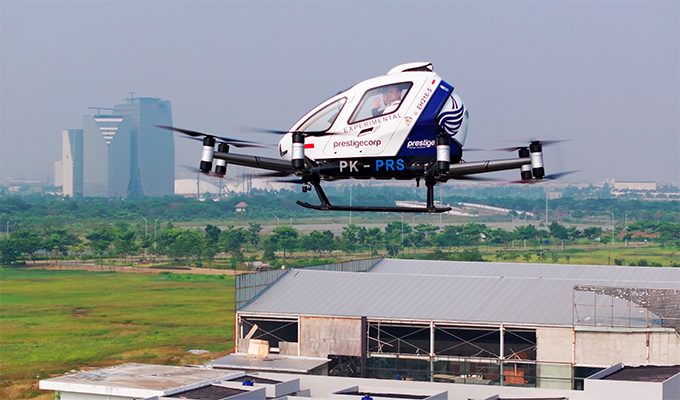 EH216-S Completes First Human-Carrying Flights in Indonesia. (Photo: © EHang) |
The EHang 216 is a pioneering autonomous aerial vehicle (AAV) designed for passenger (2 people) transport, tourism, and logistics. It features 16 propellers on eight low-slung arms, enabling vertical take-off and landing. Its USP is its focus on fully autonomous operation, requiring no pilot on board, which aims to reduce operational costs and scale more effectively. The company has achieved significant milestones, including receiving type certification from Chinese regulators, allowing for commercial use. EHang is actively working on integrating its eVTOLs into urban air mobility networks and has launched limited tourism flights in several Chinese cities, demonstrating its real-world application. Most recently (25 June 2025) they conducted pilotless demo flights in Indonesia with VIPs on board, and they are now (Nov 2025) working with Thailand’s Civil Aviation authority to set up 20 ‘sandbox’ areas where they can autonomously fly tourists on sightseeing routes. |
EVE AIR MOBILITY |
Brazil |
| Aircraft: | Eve eVTOL |
|---|---|
| Type: | Wingborne/Multi-rotor |
| Status: | First flight (un-crewed hover test) of the full-scale Eve prototype completed 19 Dec 2025. Scheduled for certification in 2026 and commercial service in 2027. |
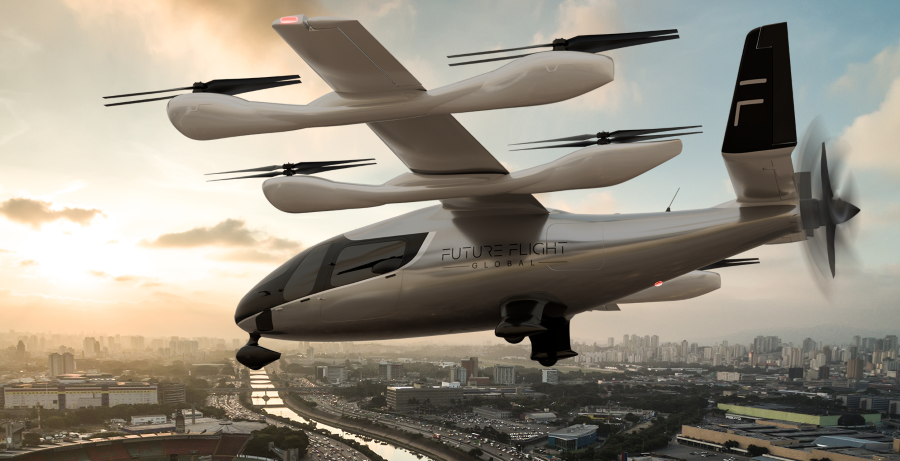 EVE eVTOL (Image: © Eve Air Mobility) |
Eve Air Mobility, backed by Embraer, is developing the first prototypes of its all-electric eVTOL aircraft with a “lift + cruise” configuration. They rolled their first prototype out in July 2024. Designed for 1 pilot + 4 passengers (initially, with potential for up to 6 in uncrewed configurations), the aircraft is expected to have a range of up to 60 miles (100 km). Eve is also developing a comprehensive urban air traffic management (UATM) solution to support future operations, and encouragingly, has a substantial order backlog for aircraft. |
HORIZON AIRCRAFT |
Canada |
| Aircraft: | Cavorite X7 |
|---|---|
| Type: | Wingborne/Multi-rotor |
| Status: | Flight testing large scale prototype. |
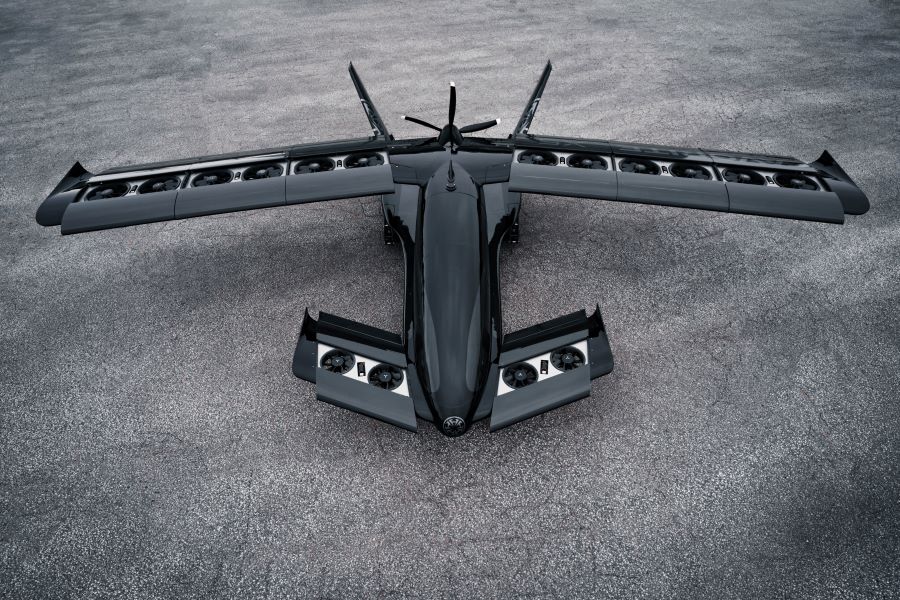 Horizon X5 prototype (©Horizon Aircraft) |
The Cavorite X7 differs from most of its wingborne/multi-rotor competitors in that its 14 (the X5 prototype has 16) vertical rotors are embedded in its wings, which then seal over as the aircraft transitions to forward flight powered by its pusher propeller. The advantage this fan-in-wing design is that its conventional winged flight mode gives it range of up to 800 kms, carrying six passengers + 1 pilot or 680 kgs cargo at up to 450 kph – a significant improvement on competing eVTOLS. The Cavorite X7 is a hybrid electric aircraft, and Horizon are currently evaluating ZeroAvia’s ZA600 hydrogen-electric powertrain, while at the same time ‘working with ZeroAvia on developing regional hydrogen-electric VTOL air travel. Horizon expect to have a full-scale aircraft ready for testing within 18 to 24 months (from June 2025), which would put first flights around late 2026 or early 2027. They have also signed a Letter of Intent with Discovery Air Chile to lease five Cavorite X7s with a projected delivery timeline of 2028. |
JOBY |
USA |
| Aircraft: | S4 |
|---|---|
| Type: | Wingborne/Multi-rotor |
| Status: | Advanced prototype, undergoing FAA certification process. Could be operational for commercial passenger services in 2025. |
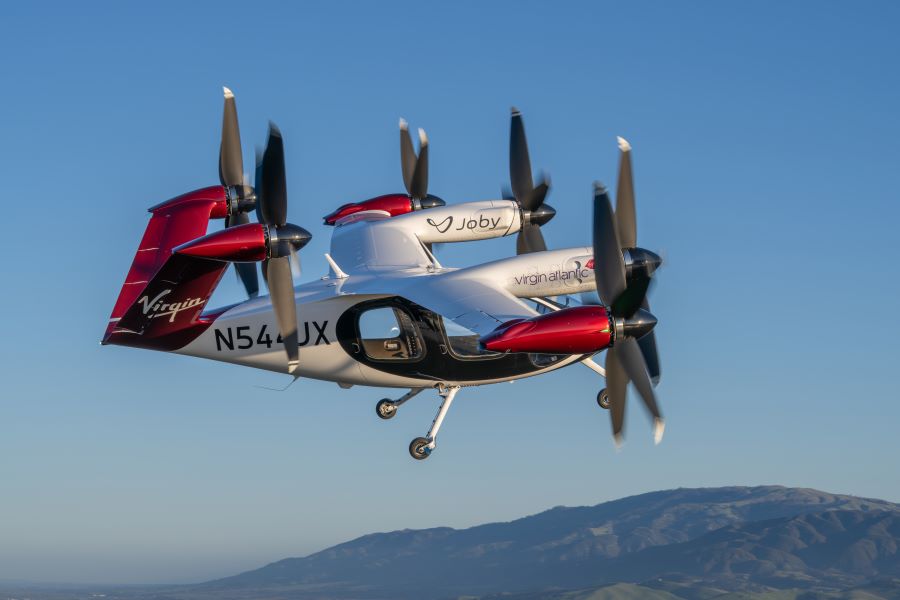 Joby S4 (© Joby ) |
The Joby S4 is a five-seat (1 pilot + 4 passengers), all-electric eVTOL aircraft designed for urban and regional air mobility. It features six tilting propellers, four of which tilt with their entire motor nacelle, and two that tilt with a linkage mechanism, enabling both vertical take-off and landing and efficient forward flight. The S4 is powered by lithium-nickel-cobalt-manganese-oxide batteries, allowing it to reach speeds of up to 200 mph (322 km/h) and ranges up to 150 miles (241 km). It has completed over 1,000 test flights. Joby aims to offer a ridesharing service and has secured partnerships with companies like Toyota and Delta Air Lines. With six prototype aircraft now certified, Joby are ramping up their production facilities to be able to produce up to 24 aircraft a year. Most recently (July 2025) they have been test flying in Dubai to assess extreme temperatures on aircraft components. |
LILIUM |
Germany |
| Aircraft: | Lilium Jet |
|---|---|
| Type: | Wingborne/Ducted jet |
| Status: | Advanced development, with ongoing flight testing and regulatory work. |
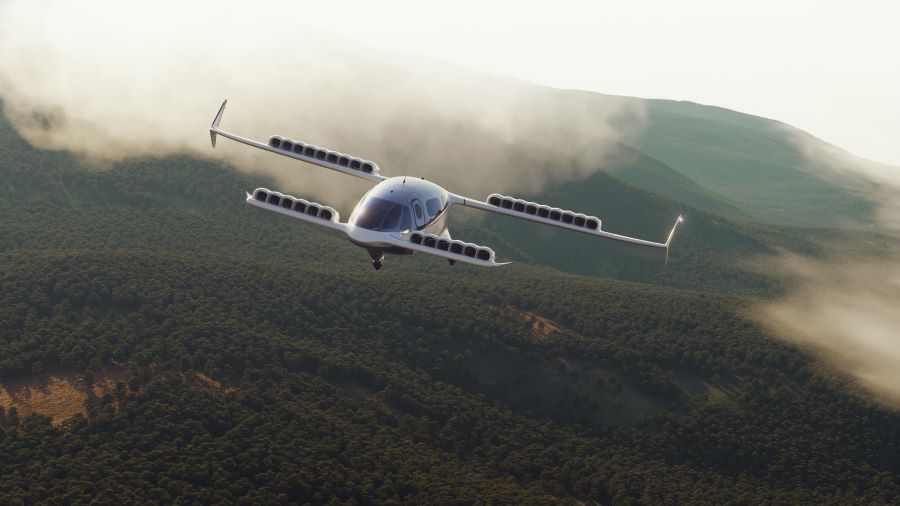 Lilium Jet (© Lilium) |
The Lilium Jet stands out with its unique ducted electric jet engine propulsion system, featuring 30 small electric jet engines integrated into its wings. This design allows for quiet vertical take-off and landing and highly efficient high-speed horizontal flight, consuming only about 10% of its available energy during cruise, allowing a range of up to 155 miles (250 km). The Lilium Jet is designed to carry up to 6 passengers in various configurations for group travel or medical transport, and is targeted at inter-city and regional routes connecting cities and replacing short-haul flights. The company has been struggling since it went into liquidation in Dec 2024 and was then rescued a few days later. In Feb 2025 it filed for insolvency again, but there is now a Dutch investment group, Ambitious Air Mobility Group (AAMG) keen to take over the Lilium project and complete all it objectives, including its military versions. |
PIVOTAL |
USA |
| Aircraft: | Helix |
|---|---|
| Type: | Multi-rotor tilt a/c |
| Status: | Already flyable under FAA regulations. |
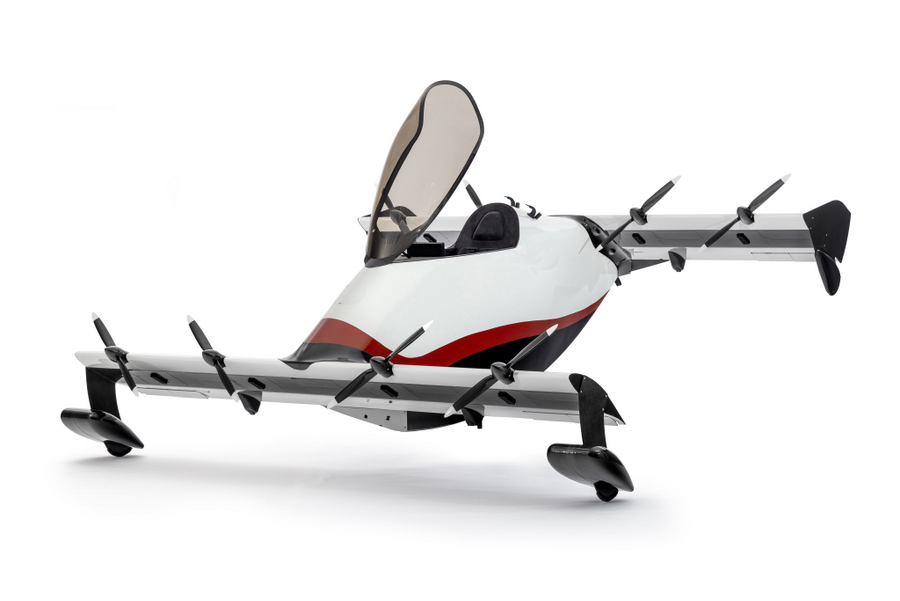 Helix (Image: © Pivotal) |
The single-seat Helix is designed to be an easy-to-fly, low-cost, ultralight flying car. It is aimed at the leisure market, but also the emergency services sector and military. Under Federal Aviation Administration guidelines, a powered ultralight aircraft weighing less than 254 pounds doesn’t require any certification to operate. So the idea is that, a paramedic, for example, can be trained to fly a Helix in around 10 days. Currently, some 53 Pivotal-trained pilots have already flown over 8,000 flights. The Helix is a tilt aircraft that rotates on its base to take off in hover mode, then tilts to horizontal for cruise mode, and tilts back again into hover mode for landing. It can fly at 55 kts (62 mph) for 30 mins/30 miles, and can be recharged in 75 mins. The cockpit is ultra-simple computer-controlled fly-by-wire, and the Helix has two interesting attributes: it can be transported easily in a trailor, and it has a built-in parachute which can be deployed in an emergency. |
SKYDRIVE Inc |
Japan |
| Aircraft: | SkyDrive |
|---|---|
| Type: | Multi-rotor |
| Status: | Flight testing for certification stages with the FAA and JCAB (Japan Civil Aviation Bureau). |
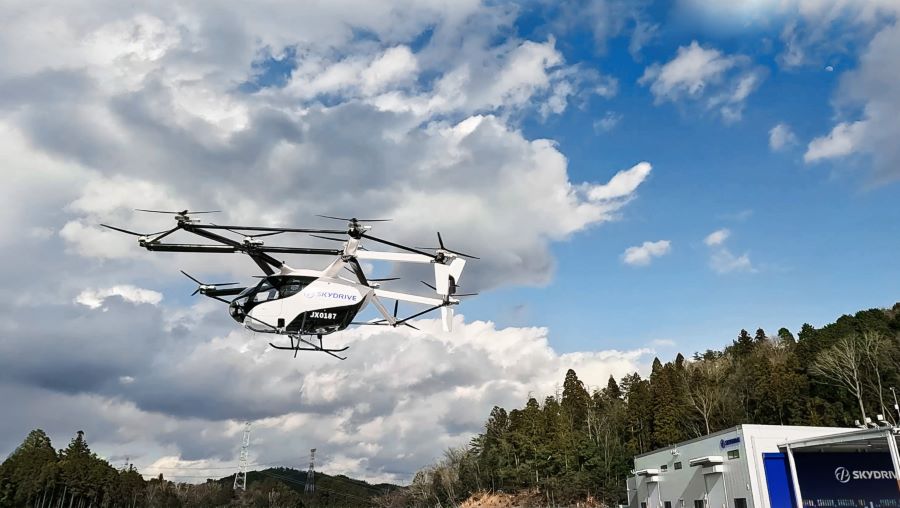 SkyDrive’s first certification flight (Photo: © SkyDrive Inc) |
An all-electric, 2-seat + 1 pilot, 12-rotor air taxi. The Skydrive is designed to fly in urban environments at speeds up to 100 km/h for 15 kms (9 miles), with plans to reach 30 kms by 2029 and 40 kms in autonomous control by 2031. |
SUPERNAL |
USA |
| Aircraft: | S-A2 |
|---|---|
| Type: | Wingborne/Multi-rotor |
| Status: | Flight testing. Expected operational in 2028. |
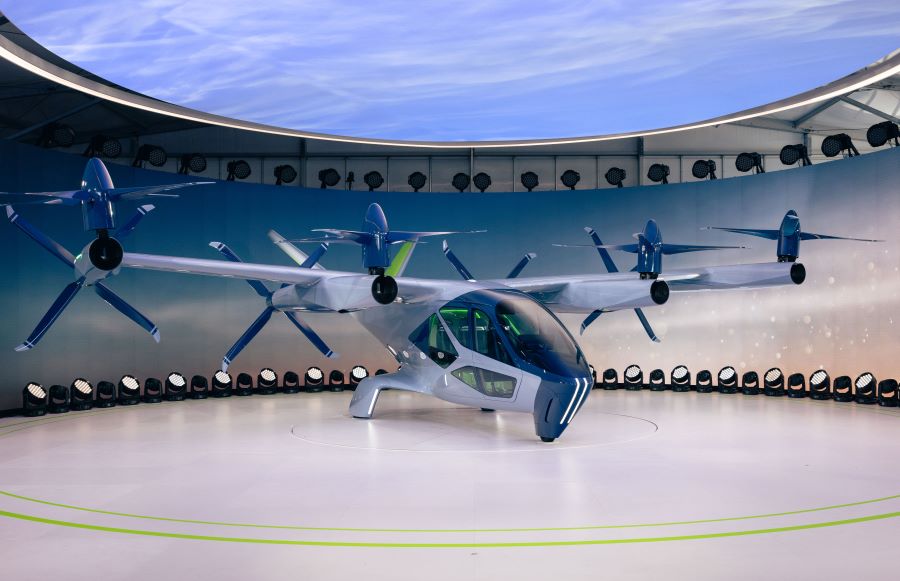 Supernal S-A2 (Photo: Supernal) |
The Supernal S-A2 is an electric vertical take-off and landing (eVTOL) aircraft developed by Hyundai Motor Group’s Advanced Air Mobility (AAM) company. Designed for urban air mobility, it features eight all-tilting rotors and a distributed electric propulsion architecture for enhanced safety and efficiency. The S-A2 is designed for 1 pilot + 4 passengers, although configurable for 2 passengers or cargo as well. The max range is projected as up to 60 miles (~ 97 km), but it’s expected to be between 25-40 miles (39-64 km) for typical city operations. Supernal is focused on meeting rigorous commercial aviation safety standards and leveraging Hyundai’s mass production capabilities to ensure affordable manufacturing. |
VERTICAL AEROSPACE |
United Kingdom |
| Aircraft: | VX4 |
|---|---|
| Type: | Wingborne/Multi-rotor |
| Status: | Flight testing. Expected operational in 2028. |
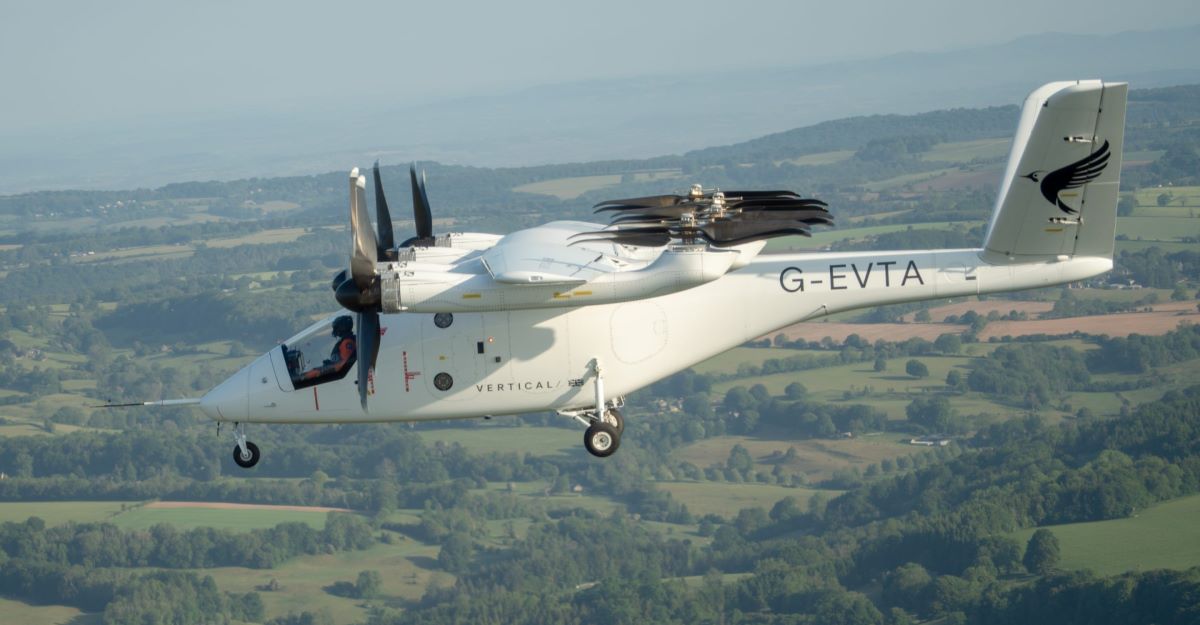 VX4 (Photo: Vertical Aerospace) |
The VX4 is designed for 4 passengers + 1 pilot. It is currently (June 2025) testing its wingborne flight dynamics, reaching speeds of up to 150 mph (120 knots) and altitudes close to 2,000 ft under real-world conditions. |
VOLOCOPTER |
Germany |
| Aircraft: | Volocity |
|---|---|
| Type: | Multi-rotor |
| Status: | Flight testing. Has flown demo flights. |
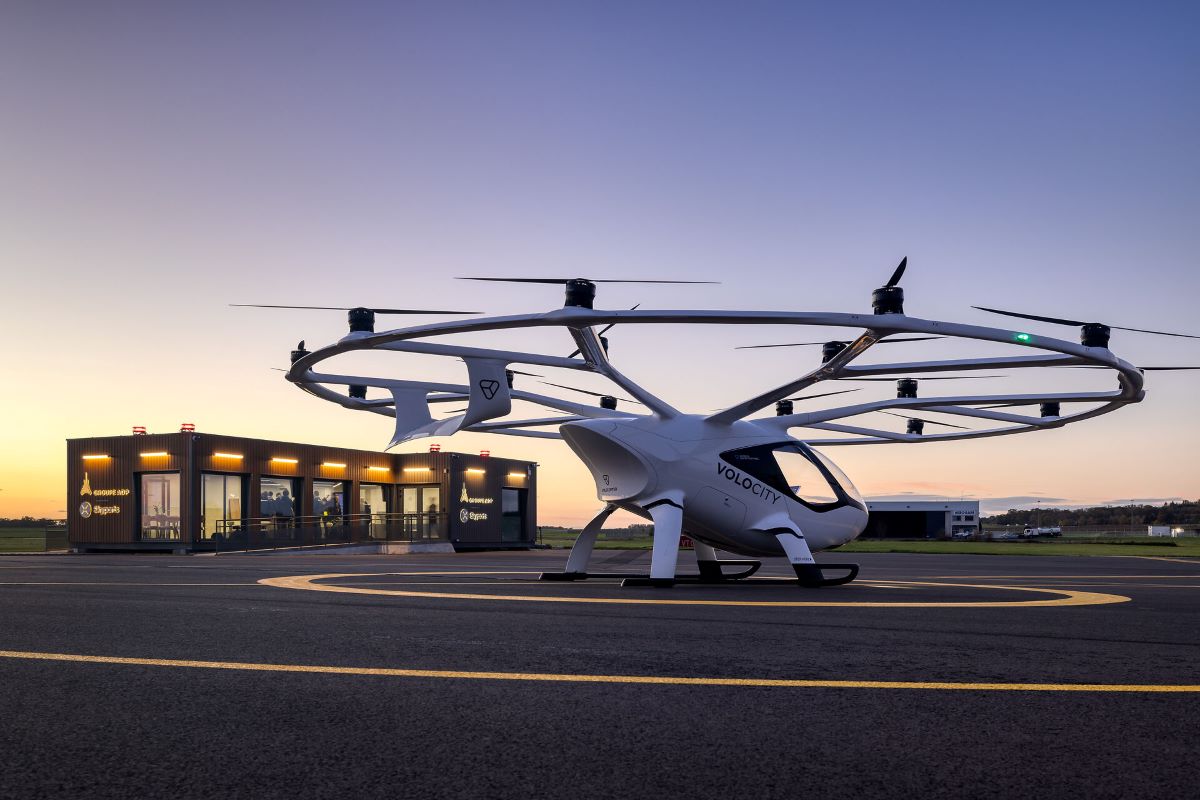 Volocity at a Paris Vertiport (© Volocopter GmbH/Nikolay Kazakov) |
Volocopter’s Volocity is designed as an inner-city air taxi, carrying 1 passenger + 1 pilot, or 2 passengers when flying autonomously. It has 18 rotors on a cicular frame powered by rechargeable lithium-ion battery packs, giving it a maximum speed of 110 km/h, a range of 22 miles (35 km), and a noise level of 65 dB(A) at 75 metres. Volocopter has conducted extensive test flights in cities like Dubai and Singapore and is working closely with regulatory bodies to obtain the necessary approvals for commercial operation. They also offer a cargo variant, the VoloDrone, expanding their reach into logistics. |
WISK AERO |
USA |
| Aircraft: | Generation 6 |
|---|---|
| Type: | Wingborne/Multi-rotor |
| Status: | In development with the goal of being the first FAA-certified commercial autonomous passenger aircraft. First flight conducted in Dec 2025. |
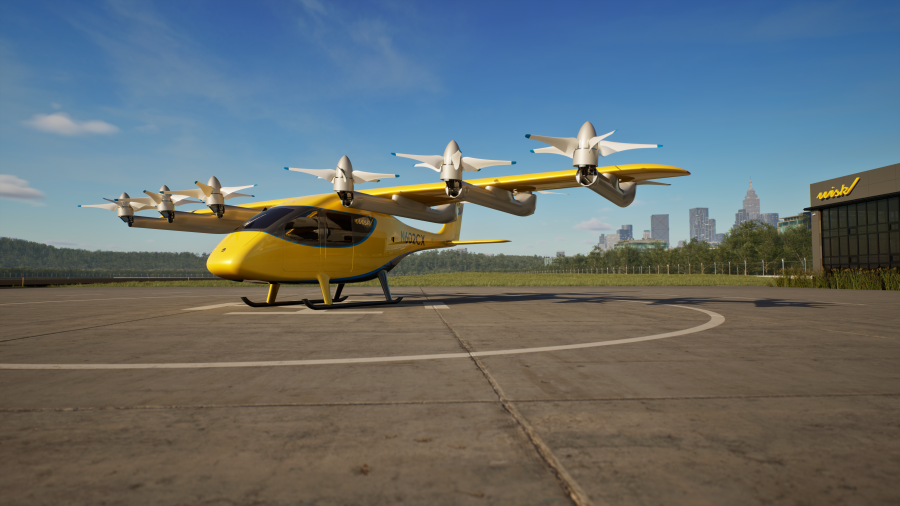 Wisk Gen 6 (Image: © Wisk Aero) |
An all-electric, autonomous, four-seat air taxi that flies remotely while being monitored live by supervisors on the ground. Its 12 x rotor/props enable it to take-off and land vertically, and cruise at between 110–120 Knots with a range of 90 miles before recharge (15 mins). Wisk is a wholly-owned Boeing subsidiary and has recently (June 2025) signed MOUs with Miami International Airport and the University of Miami to develop safe, autonomous flight in South Florida, joining Houston, Texas, Los Angeles County, California, and Brisbane, Australia as key launch markets for Wisk. |
XPENG ARIDGE |
China |
| Aircraft: | Land Aircraft Carrier |
|---|---|
| Type: | Multi-rotor + land vehicle |
| Status: | Many autonomous flights already. First manned demo Oct 2025. Expected operational: 2026 |
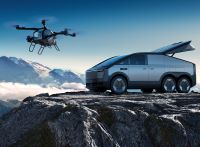 Xpeng LAC (Photo: © Xpeng Airidge) |
The XPENG ARIDGE Land Aircraft Carrier is a combined eVTOL and transporter. The air module is a two-seat low-altitude eVTOL aircraft, which automatically deployed and re-acquired by a large futuristic vehicle transporter. XPENG ARIDGE (formerly XPENG AEROHT) are also developing the A868, a high-speed, long-range flying car that integrates full tiltrotor technology and a hybrid electrical powertrain system. With a range of over 500 km, a top speed exceeding 360 km/h, and a six-seat cabin. |
